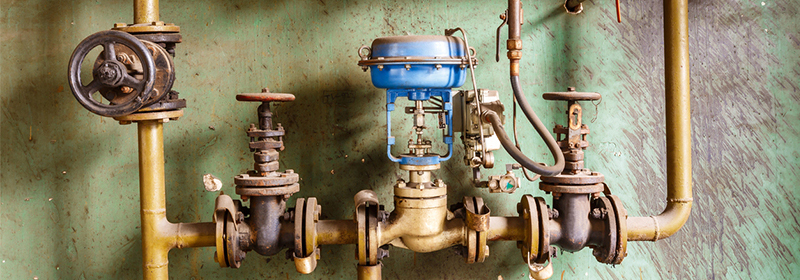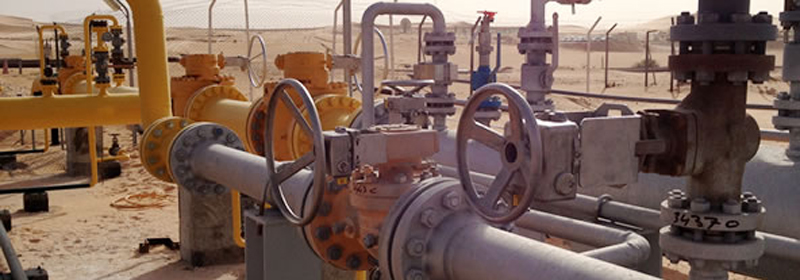Pneumatic Control Valve also named Pneumatic Regulating Valve and Pneumatic Diaphragm valve. The Pneumatic Control Valve is a very important control equipment in industrial production. Whether it works normally or not is directly related to the production of the whole device. At present, with the control valve technology changes with each passing day, the control valve manufacturers and forms are very numerous, the function also has the different, following we will introduce the control valve installation and the inspection from 5 points.
Inspection Before Installation Of Control Valve
The control valve incoming inspection is a very important step to confirm whether the control valve delivery meets the design requirements. Each of the technical requirements of the control valve shall meet the design requirements, but in the incoming inspection should focus on the following 4 points:
1. Valve body / Valve internals specification this item mainly includes: Valve type, valve type, nominal diameter, valve seat size, valve core type, flow characteristic, leakage class, valve body material, valve core material, valve seat material, CV value, flange standard class size and sealing surface type, etc. If it is found that one of the contents does not match the design, it should be confirmed and approved by the design.
2. Executive part this content should check the executive part type, type, function form, spring range, air supply pressure and so on.
3. Positioner part this part mainly checks the input signal of the positioner, the pressure of the air source, the size of the electrical and air source interface and the explosion-proof grade, in which the explosion-proof grade shall not be lower than the design grade.
4. Accessories according to the technical requirements of the design of control valve carefully cleaning accessories, such as filter pressure reducing valve, valve position switch, solenoid valve, hand wheel mechanism, special tools. The above contents can be tested by cleaning, measuring instruments, checking the nameplate and special testing means (such as flange and bolt material can be identified by spectral analysis) and so on.
Hydraulic Test Of Control Valve
The hydraulic test of the valve body includes the pressure test of the valve body and the leakage test when the valve core is fully closed. In general, when design pressure exceeds 10MPA, the body must be subjected to a pressure test to verify the pressure of the body and the cover.
1. Pressure Test of Control Valve
(1) Manual pressure test pump is used for pressure test of control Valve body, electric pressure test pump is forbidden.
(2) The test medium is clean water.
(3) The test pressure is 1.25 times of the design pressure.
(4) The pressure gauge used in pressure test should be checked and qualified, its accuracy should not be lower than 1.5 grade, and the upper limit of calibration should be 1.5 ~ 2 times of the test pressure.
(5) The air valve opens at least 20% of the valve spool during the pressure test, which must be kept in mind to prevent the Spool from being damaged by excessive pressure on one side. Usually, a certain amount of leakage is allowed in the Spool of the control valve. According to the difference of the leakage grade of the control valve, only the high differential pressure control Valve (V, VI leakage) should be tested for leakage.
2. During The Leak Test
(1) Manual pressure test pump is used for pressure test of Control Valve body, electric pressure test pump is forbidden.
(2) The test medium is clean water (the Class VI leakage valve uses clean air) .
(3) The leakage level test pressure is the maximum differential pressure designed when the valve is working (check the design parameters) .
(4) The pressure gauge used in pressure test should be checked and qualified, its accuracy should not be lower than 1.5 grade, and the upper limit of scale value should be 1.5 ~ 2 times of the test pressure.

Unit Adjustment Of Control Valve
All newly installed pneumatic control valves shall be individually calibrated prior to installation. Basic Error: 1.5%.
Return error: 1.5%.
Non-sensitive zone: 0.6%.
Installation Of Control Valve
The installation of the control valve is a key issue should be paid attention to, the quality of installation is directly related to the operation and performance of the Control Valve. There are 5 things to note during installation:
(1) Before installing the regulator, the dust accumulated by the valve during storage must be carefully removed, and the valve must be kept clean during installation. Because dust impurities can damage the seat and internals. To protect cleanliness, cover plates are usually installed on the unwelded open flange end of the day.
(2) When the Control Valve is installed, the Arrow on the valve body shall flow in the same direction as the medium.
(3) The control valve is a precision component, if they are subjected to the stress of the pipe deformation, it will destroy the normal work. Therefore, the flange and pipe installation should be vertical and accurate location to avoid the deformation of the pipe. Also, the pipe should be properly supported to prevent it from bending under the weight of the valve.
(4) Special care must be taken when welding the control valve to the pipe. If the control valve and pipe welding attention is not enough, can not eliminate the stress, it will produce deformation. When welding, must strictly avoid welding slag splash into the valve, the existence of welding slag damage valve performance, if splash directly in the Spool, or directly affect the action of the control valve, heavy damage spool and valve seat.
(5) When the pipe is being tested and blow-out, the regulating valve should be removed and connected with the corresponding straight pipe sections to prevent welding slag, iron chipping and other sundries from getting stuck between the valve core and the valve seat. Remove the control valve opening flange end should be wrapped firmly with plastic cloth.

Linkage Test of Control Valve
The linkage test must be carried out before starting the regulating valve after installation. Linkage testing should focus on the following 3 points:
(1) The process pipeline must pass the strict purging before the linkage test of the control valve, and it is forbidden to install the control valve in the pipeline which has not passed the purging Because the pipe residues such as welding slag, dust and other hard debris will damage the spool and seat sealing surface.
(2) The two ends of the butterfly valve should not be tested or blocked before linkage.
(3) For the Control Valve with hand wheel, the hand wheel should be in “release” position. Check whether the supply pressure of pressure reducing valve meets the air supply requirement of each control valve.
In the process of installation of industrial automatic instruments, the installation and operation of control valve is the most complicated, difficult and easy to be out of order. In the whole process, the instrument and pipeline departments should coordinate, support and cooperate with each other closely, report and solve problems in time, and operate strictly according to requirements and regulations only in this way can we guarantee the installation quality and operation quality of the regulator to ensure the smooth progress of the entire installation project and the smooth commissioning of the entire industrial plant.
Post time: Jul-28-2021




